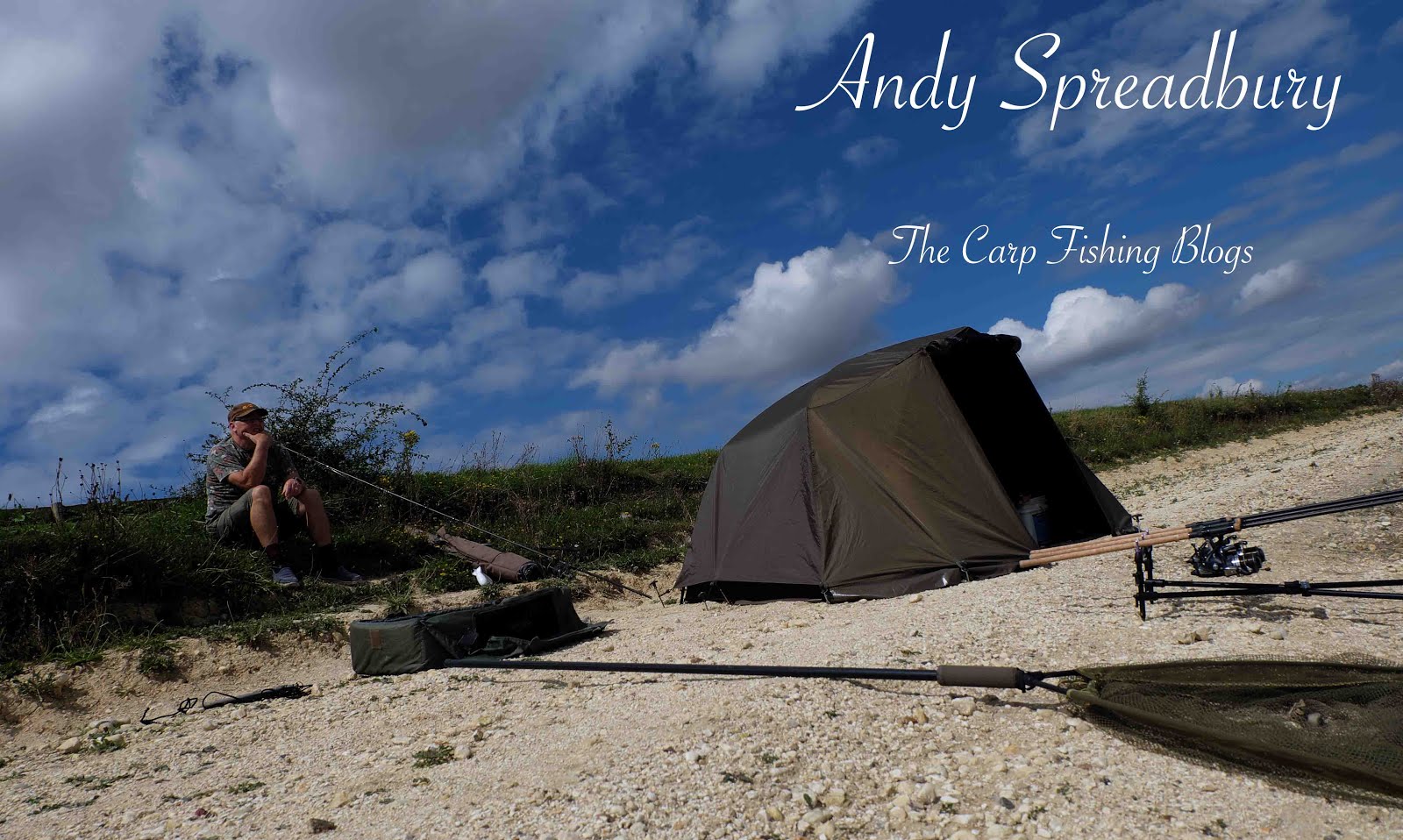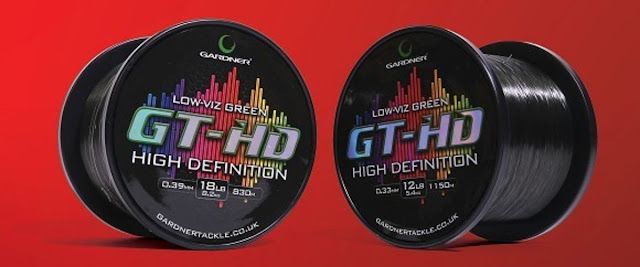* LOCKDOWN SPECIAL *
Line Tests
We’re all in the same boat at the moment…Prevented from going fishing by the need to stay at home because of measures imposed by the government to control the spread of the Coronovirus, ‘Covid-19’. And quite rightly to; people are dying out there. In their thousands…
The innocuous pastime of fishing seems a trivial activity compared to the struggles of those trying to breathe in Intensive Care Departments of our hospitals; what compares with the ultimate Fight For Life in these circumstances? It seems crass to even discuss Fishing at a time like this.
But we must all carry on and do what we must to preserve life and limb and sanity during this Global Pandemic and if discussing Fishing gets us through this then so be it.
One of the things I’ve needed to do for some time is change the line on my reels. I’ve had very good wear from the ‘Gardner GT-HD’ for almost a year now and wouldn’t hesitate to recommend it.
I first saw reference to it in a video by Leon Bartrup and decided to try it myself and was very glad I did as it has proved so much better than the ‘Korda Touchdown’ I had been using up to then. Ever one curious of other possibilities, I thought I would use this time to evaluate other brands and my research immediately revealed a most confusing state of affairs.
The Grading Of Fishing Lines
The global manufacture of fishing lines has hitherto been guided by the International Game Fish Association (IGFA) worldwide. This is the body set up to record World Records of all the fish anglers pursue in the context of their sport in which Line Class Records are distinct. This means it is not so much what the weight of a particular fish you catch that matters - but the strength of the tackle (line) on which it was caught. So we have a 2lbs. Line Class record for Carp of 33lbs. 3ozs. caught by Joachim Ochmann of Riegersburg Austria, on 24 August 2013 (now that’s some catch on 2lbs. line!)
Interestingly, the current heaviest IGFA Line Class World Record Carp is a fish of 66lbs. 2oz. caught by Takashi Tatsuoka of Mie, Japan in the 30lbs. Line Class category. If you want to get your name in the record books there’s plenty of scope here! I hasten to add these are IGFA Records - not what we as carp anglers accept as World Records (if indeed any of us do these days - that’s a story and debate for another time). IGFA do have an ‘All Tackle’ category and this is listed as the 75lbs. 11ozs. fish caught by Leo van Der Gugten from Lac de St. Cassien, France. This comes no-where near the 100-pounders caught from Euro Aqua in Hungary however!
It’s all a bit of a nonsense really!
The whole point of this is that as far as IGFA is concerned, the line strength on which a fish is caught is critical to its categorisation; the IGFA rules state (bizarrely) that to qualify for the 12lbs. Line class, the fish must weigh at least 6lbs.(?) and a sample of the line must be submitted for testing purposes. There’s a whole lot of other meaningless stuff as well you’d have to comply with.
To be fair; I couldn’t be arsed…
We thus have a situation whereby fishing line manufacturers have had to ensure their lines (to comply with IGFA requirements) must not exceed the stated breaking strain of the Line Class [within a bit - even this is an arbitrary figure] otherwise a record application will fail. IGFA have rules about breaking strains viz: “line designated by the manufacturer as 8-pound class line may test up to 8.81 pounds (4 kilograms) to qualify for a 4-kilogram (8-pound) Line Class world record.”
(What?… it’s either 4 kilogram or 8 pounds - it cannot be both!)
The upshot of this is that since the rest of the world has hitherto been obsessed with IGFA rules, breaking strains of lines have been manufactured to below or at least at those stated on the box. In the UK however we have in recent years abandoned the IGFA ‘standard’ and have gone the other way in making lines that exceed the stated breaking strain on the box to ensure complicity with the strength it is sold at, so the truth of the matter is we have utter confusion! In many cases you have no idea what you’ve got on your reel!
The bottom line is, if it’s got “IGFA” on the box, the chances are the line strength definitely will not exceed the stated breaking strain and may even be below it.
Fair play to ‘The Tackle Box’, Dartford. They have done a shed load of testing on a whole raft of lines to enable us to compare line diameters and breaking strains. This is a much more sensible way of approaching things; their comparison charts can be found here:
This is a very useful way of comparing brands and I have used it extensively myself in the past; it’s well worth looking at. It doesn’t cover the whole story however because there is more to fishing line than strength and diameter and it is other factors I wish to take into account in my own evaluation of what to put on my reels.
Evaluation Criteria
How do you assess what is important in a fishing line for selection purposes? Like Hooks, it’s a very personal thing. We each have our own fishing and priorities. Some may fish big, wide, open ‘inland seas’ where extreme range fishing is the order of the day; others may fish small, enclosed, snaggy little pools where strength and toughness take priority. There is no, one, set of criteria that does for all and different scenarios call for different lines.My own selection criteria reflect my own fishing and in particular the fishery I habituate - the Paddlesworth complex at Snodland in Kent. My choices are based on the waters there and will both apply, and not apply on other fisheries.
I decided at the outset I would take a practical approach to selection. As far as possible I would abandon micrometers and tensometers and to this end would ignore The Tackle Box charts, useful as they are. My research was based on people’s personal opinions of what they have used in the past and I sourced these from trawls of on-line websites such as ‘CarpForum’ and 'Carp.com' and others. In fishing (as in a lot of things) there is no substitute for practical experience and whilst ‘scientific data’ is essential at times for comparison purposes, Fishing is a practical exercise and requires practical solutions to the problems it presents.
Criteria
I made a list of the things that I considered important to have in my fishing lines:
- Strength
- Line thickness
- Visibility
- Suppleness
- Sink-ability
Of course, line strength goes a bit deeper than just getting hold of it and seeing if you can break it between your hands - there are knots involved, and if there are knots there are weaknesses. The test I’ve done is to duplicate this situation whereby I have a Figure-of-Eight knot (loop) at the end of my line to which I make a Loop-to-Loop connection to my leader. So you are not actually testing the line - but the knot at the end of it.
Line Thickness is an issue. Not because I think a carp can see it and will be spooked by it (there is much debate about whether carp can actually see our lines or not and what their reaction to them is) but because the waters I fish are deep. When I cast out against the clip the lead and rig enter the water and the process of ‘Swing-Back’ results in the bait being closer to the bank than the horizontal distance. During this process a ‘bow’ in the line is caused by the resistance of the line against the water as it sinks. The thicker the line, the greater this resistance, and the greater the ‘bow’. The thinnest line I can get away with is the order of the day. This also contributes to the next criterion:
Line Visibility. As I say, I don’t know whether Carp can see my line or not, or if they can, do they recognise what it is? Either way, until we can get a carp to tell us, this is just going to be a matter of opinion. What I do recognise is the matter of Confidence. For me, it matters not one way or the other, if I am confident in what I am using then I’ve got the confidence in chucking it out into the pond. I am more confident in using a line which is as unobtrusive as possible rather than one which can be clearly seen and it is here that Fluorocarbons are suggested as being almost ‘invisible’ under water.
I just don’t like them. For all sorts of reasons; mostly they are too ‘wiry’ for my taste and don’t cast as well as monofilaments. They also need looking after by way of cleaning after a session. Being a lazy sod I generally can’t be arsed.
I do like a line to be Supple. I can’t really say why; in my experience, supple lines cast further but this isn’t the real reason I prefer them. They lay on the bottom better in my opinion but this may be purely an irrational thing on my part. Again, it’s a subjective Confidence thing. A supple line just makes me more confident.
Sink-ability. When I cast a rig out I want the line to sink through the surface film and lay on the bottom; some lines are a bugger to sink and some that claim they ‘sink like a brick’ just don’t. This ability to sink to the bottom in water is a product of the line’s ‘Specific Gravity’ (how heavy in water it is). The specific gravity of water is 1.0, therefore anything with a specific gravity of 1.0 will neither sink nor float. Greater than 1.0 means that it is heavier than water and will thus sink; less than 1.0 (at 4ºC) and it will float. I am more confident using a heavy line that is at least trying to hug the bottom rather than one that is happily suspended some distance off it.
The Selection Matrix
So the form here is to set up a Selection Matrix:Initially, each line is assessed under each criterion and is awarded a one for ‘better’ or nought for ‘not better’.
The idea here is to award a ‘Selection Factor’ to each criterion in order of importance. So here, the most important factor is line strength so it gets awarded a three; the least important factors are awarded only one. By multiplying the Selection Factor by either a one or a nought, totals can be arrived for each. Whichever scores the most comes out tops.
The two lines under consideration were the ‘Fox Exocet in 16lbs.’ and ‘Shimano Technium Black in 12lbs.’ I decided on these two after undertaking my research trawl of the Internet and these two lines cropped up frequently as receiving positive endorsements from Forum participants. I hasten to add that I receive no money or products from anyone; I have no sponsors and am entirely self-funded so I have no axe to grind with any particular make, brand, or product. I would like to have tested far more but cost is a limiting factor.
As you can see, this is purely a comparison between two products. It is highly likely that results would be completely different if other products were to be considered, even from the same brands.
Notes On The Tests
As I said previously, the strength test was conducted by tying a Figure-of-Eight Loop in the lines and attempting to break them by hand force alone. I also tugged and applied sudden pulls on them in simulation of a Carp doing the same. Each test was repeated five times. I received one failure for the Fox and two for the Shimano so I declared the Fox the winner.Laying the two lines side by side, it seemed that the Shimano was slightly thicker than the Fox (even though it is rated lighter) but the Fox seemed to be more visible. I was determined to apply this visual test rather than a more ‘scientific’ micrometer measurement.
On the substrate where they lay (on my garden dirt; a fair approximation of the Pollard lake bottom) they both seemed about the same visibility although the Shimano may have slightly edged it, so it was awarded the score.
As far as suppleness was concerned however, it was a positive vote for the 12lbs. Shimano Black.
Why did I trial the 12lbs Shimano rather than the heavier version? Forum contributors raved about the 12lbs. being really strong and well above the stated breaking strain so I thought I would test their anecdotal ‘evidence’.
The Results
The Fox Exocet in 16lbs. was the winner although I suggest the result may well be reversed should I increase the line strength to the next size up (on the Shimano). In this sense it wasn’t a fair comparison; I’m inclined to repeat it when I’ve got the money to spare.
Conclusion
I am fully confident in using the Fox Exocet for my carp fishing and I’d be reasonably confident in using the Shimano in the next size up. The only real difference between the two was that there was a marginal strength difference in favour of the Fox and this was to be expected given it was rated stronger.
The sooner we can get this blasted Lockdown over and done with, the sooner I can get out there and put it to a real test - hopefully with a carp on!
Keep your distance. Stay at home. Keep safe.
It’s always darkest before the dawn…








Comments
Post a Comment